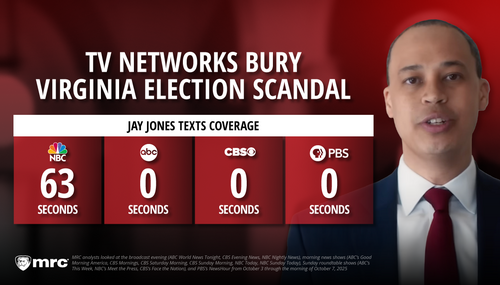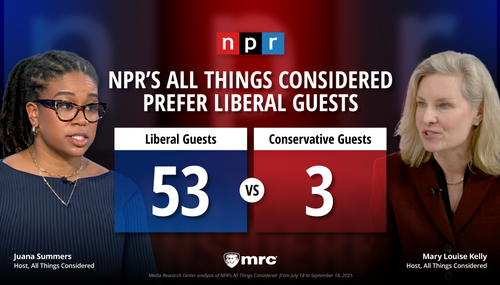Beware when The Washington Post calls someone a “moderate.” It probably means they’re a liberal ranter. In Sunday’s newspaper, a book review by Post writer Michael Rosenwald of a book called Arms: The Culture and Credo of the Gun by a Canadian journalist named A. J. Somerset who loathes American gun culture. It's titled "Wisdom of a Gun-Owning Moderate."
For example: “The color white plays an important role in this history: Somerset writes that ‘race war has long been the drunken uncle of American gun culture.’” He claims “Guns are all about keeping black people down”.
Somerset owns and shoots guns, which somehow makes him a “moderate.” Rosenwald reports:
But what makes his book entertaining, often funny and ultimately an important addition to the limited canon on guns is that Somerset is a gun guy. He owns them, shoots them and loves them. And yet he is exasperated because gun owners, along with their culture and rhetoric, have increasingly ‘grown more radical,” leaving “anyone who breaks ranks” as a “traitor to the cause.”
Which means Somerset will be considered a traitor.
The NRA and other Second Amendment champions are called “the loudest monkeys” screeching in the treetops:
The loudest voices in the ensuing debates tend to be those at each extreme, leaving out the important middle, where solutions often emerge. “As the treetop squawking and screeching begins, the loudest monkeys take over, and the moderates find better ways to spend their time — partly because, as moderates, they don’t worry too much from day to day about apple pie, democracy and the AR-15,” Somerset writes. “And so the podium is left to the radical, the only one who really wants to stand at the mike and rant. The thing about living in a septic tank is the nasty stuff floats.”
So his opponents are fecal matter. Who’s a “moderate” here?
Rosenwald and his Canadian buddy blame the NRA for every gun death, especially accidents:
Somerset is great at describing the culture but short on solid ideas for changing it, which is not so much a criticism of the book as an observation about how difficult it is to alter human behavior, especially when fear is involved. The gun industry has bred successive generations of new gun owners. And once they get guns, political radicalization is easy, and those with softer views learn to keep their mouths shut....
Somerset is particularly critical of the gun industry’s appeals to women, which he calls a strange nod toward feminism by the men in charge of the heavily male-dominated gun industry. The message is this: Women need a gun to be safe and strong, and it is their sovereign right to defend not just themselves but their rights.
Somerset writes about Victoria Rutledge, a woman in rural Idaho who had a loaded handgun in her purse at Wal-Mart and was shot there with it by her 2-year-old son. “The finger of blame here points not at [her],” Somerset writes, “but at the armed-camp vision of America, the culture of complete preparedness that insists you must go armed, that you must at all times have a loaded weapon within reach, with a round in the chamber, ready to fire. Veronica Rutledge’s death was not the tragedy of a young mother’s negligence with a loaded handgun. It was the tragedy of a culture of negligence.”
As a Toronto Globe and Mail book review elaborated,
“This is a special form of feminism, in which men are still in charge, and strong, independent women stand up for the things men like, such as guns,” he writes. On the campaigns to arm women to better protect them, he pronounces, “The true threat to women’s safety is not in the park, where balaclava-clad rapists lurk; it’s in the home, and it calls you ‘Honey.’”




